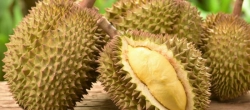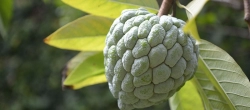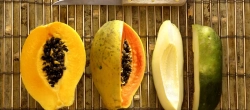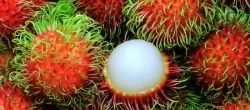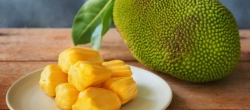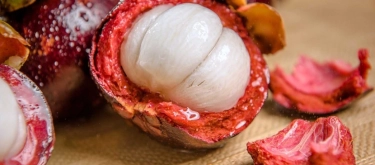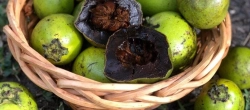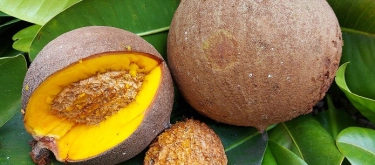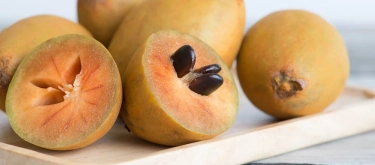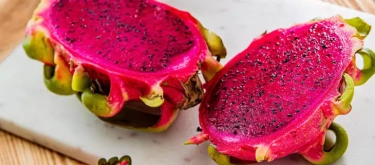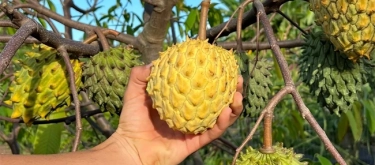Chempedak: Taste Profile, Aroma, Benefits and Health Risks
Chempedak is a tropical fruit native to Southeast Asia and belongs to the same family as jackfruit and durian. With its distinctive flavor and aroma, chempedak has long been cherished by locals for its unique taste and nutritional value. The fruit is characterized by its soft, custard-like flesh, sweet and slightly tangy flavor, and a subtle, complex aroma that sets it apart from its relatives. This article provides an in-depth exploration of chempedak’s sensory attributes, detailed flavor analysis, culinary applications, nutritional benefits, and practical tips for selecting, storing, and enjoying this exotic fruit.
What does Chempedak taste like?
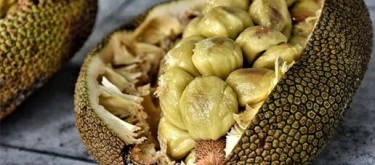
Taste, Aroma, Texture, and Visual Appearance
Taste:
Chempedak offers a deliciously sweet yet subtly tangy flavor.
- Flavor Description: When you taste chempedak, you experience a rich sweetness reminiscent of a blend between banana and mango, balanced by a gentle tartness that enlivens the palate. Its flavor profile is complex yet approachable, making it a delightful treat on its own or in culinary creations.
Aroma:
The aroma of chempedak is warm and inviting, with hints of tropical fruit.
- Aromatic Description: Chempedak emits a fruity, slightly musky fragrance with a hint of floral notes. This pleasant aroma is less overpowering than that of durian, yet distinctive enough to signal its exotic origin.
Texture:
Texture plays a significant role in the appeal of chempedak.
- Texture Description: The flesh is soft, creamy, and custard-like, with a smooth consistency that melts in your mouth. Small, soft seeds are embedded throughout, adding a slight, enjoyable crunch without detracting from the overall creamy experience.
Visual Appearance:
Chempedak is visually striking and naturally appealing.
- Visual Description: The fruit features a thick, greenish or yellowish outer skin with a rough, bumpy texture. When opened, it reveals bright, golden-orange flesh that is creamy and inviting, dotted with soft seeds. This dramatic contrast between the exterior and interior makes chempedak a standout on any fruit platter.
In-depth Flavor Analysis of Chempedak
The unique flavor of chempedak is derived from the delicate interplay of its natural sugars, organic acids, and aromatic compounds:
- Natural Sweetness and Tang:
Chempedak’s flavor is driven by naturally occurring sugars balanced with mild organic acids, producing a harmonious blend of sweetness and a refreshing tartness. - Complex Aroma and Depth:
Volatile compounds in chempedak contribute to its distinctive fruity and slightly floral aroma, which enhances the overall flavor complexity. - Influence of Ripeness:
Optimal ripeness is crucial; a perfectly ripe chempedak offers an ideal balance of creamy sweetness and tang, while underripe fruit may be too tart and overripe fruit can become overly soft, reducing the textural contrast. - Synergistic Flavor Profile:
The combination of these elements results in a dynamic, multi-layered taste that is both indulgent and refreshing, making chempedak a truly unique tropical fruit.
Culinary Applications of Chempedak
- Primary Uses:
Chempedak can be enjoyed fresh or used in a variety of culinary preparations. - Popular Applications:
- Fresh Consumption: Eat chempedak on its own or add it to tropical fruit salads to enhance their sweetness.
- Smoothies and Juices: Blend chempedak with other fruits for a creamy, nutrient-rich beverage.
- Desserts: Incorporate it into ice creams, puddings, and cakes to add a unique tropical twist.
- Savory Dishes: Use chempedak in fusion recipes like salsas or chutneys where its mild tang complements spicy and savory elements.
- Ideal Pairings:
Chempedak pairs well with citrus fruits, coconut milk, ginger, and light dairy products, enhancing both sweet and savory dishes with its creamy texture and balanced flavor.
Selection and Storage of Chempedak
- Selecting Chempedak:
Choose chempedak that is slightly soft to the touch, indicating ripeness, yet firm enough to retain its structure. The outer skin should be free from blemishes, and the fruit should emit a fragrant, fruity aroma. - Storage Recommendations:
Store unripe chempedak at room temperature to allow for natural ripening. Once ripe, refrigerate in a sealed container to maintain its freshness and texture. For extended storage, peel and slice the fruit, then freeze it for later use in smoothies or desserts.
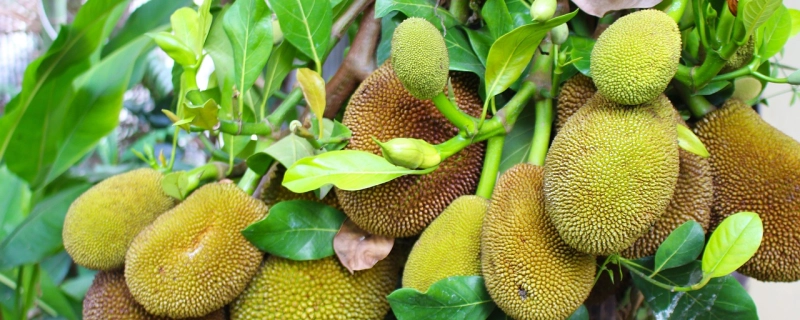
Quick Facts About Chempedak
- Tropical Heritage:
Native to Southeast Asia, chempedak is related to jackfruit and durian. - Unique Flavor:
Offers a rich, custard-like sweetness balanced by a subtle tang. - Distinctive Appearance:
Features a rough, bumpy outer skin with bright, golden-orange, creamy flesh. - Nutrient-Rich:
High in vitamins, antioxidants, and dietary fiber. - Versatility:
Enjoyed both fresh and as an ingredient in innovative recipes. - Low-Calorie:
A nutritious, low-calorie option ideal for healthy diets. - Hydrating:
Its high water content makes it excellent for hydration. - Cultural Significance:
Valued in tropical cuisines for both its flavor and nutritional benefits.
Benefits of Chempedak
- Nutrient Dense:
Rich in vitamins, particularly vitamin C, and antioxidants that boost overall health. - Digestive Health:
High dietary fiber supports healthy digestion and helps regulate blood sugar levels. - Low-Calorie Energy:
Provides essential nutrients with minimal calories, making it suitable for weight management. - Hydration:
Its high water content aids in maintaining proper hydration. - Immune Support:
The vitamins and antioxidants in chempedak help strengthen the immune system. - Versatile Use:
Its mild yet distinct flavor makes it adaptable for a variety of culinary applications. - Natural Sweetness:
Offers a delicate sweetness that can reduce the need for added sugars. - Promotes Overall Wellness:
A balanced mix of nutrients supports metabolic and cardiovascular health.
Additional Nutritional Insights and Unique Varietal Details
- Core Composition:
Chempedak is primarily composed of water, natural sugars, and dietary fiber, contributing to its hydrating and low-calorie nature. - Caloric Content:
Approximately 60–70 calories per 100 grams, making it a light and nutritious fruit. - Micronutrient Profile:
Rich in vitamin C, potassium, and several B vitamins that support immune function and energy metabolism. - Dietary Fiber:
The fiber in chempedak aids in digestion and helps regulate blood sugar levels. - Varietal Differences:
Different cultivars may offer slight variations in sweetness and tang, with some exhibiting a more pronounced tropical flavor. - Enzymatic Activity:
Natural enzymes present in chempedak enhance carbohydrate digestion and overall digestibility. - Antioxidant Capacity:
High levels of antioxidants protect cells from oxidative stress and contribute to overall health. - Culinary Innovation:
Modern chefs are incorporating chempedak into both traditional and fusion recipes—from fruit salads and smoothies to creative desserts and savory dishes—highlighting its versatility.
How to Eat Chempedak
- Fresh Consumption:
Peel the skin off, remove the seeds, and enjoy the soft, creamy flesh on its own. - Fruit Salads:
Slice chempedak and add it to mixed fruit salads to enhance the tropical flavor profile. - Smoothies and Juices:
Blend chempedak with other fruits for a refreshing, nutrient-packed drink. - Dessert Topping:
Use chempedak as a topping for ice cream, yogurt, or in fruit-based tarts to add a unique, tropical twist. - Cooked Dishes:
Incorporate chempedak into steamed or stir-fried recipes, where its mild flavor complements other ingredients. - Frozen Treats:
Peel, slice, and freeze chempedak to enjoy as a refreshing, chilled dessert.
Harm (Potential Negative Effects) of Chempedak
- Allergic Reactions:
Although rare, some individuals may be allergic to chempedak and experience symptoms such as itching or swelling. - Digestive Sensitivity:
Its high fiber content may cause digestive discomfort or bloating if consumed in excess. - Caloric Considerations:
While low in calories, consuming large quantities could contribute to an increased overall caloric intake. - Pesticide Residues:
Non-organic chempedak might contain pesticide residues, so it is advisable to wash the fruit thoroughly or opt for organic varieties. - Oxalate Content:
Chempedak may contain moderate levels of oxalates, which could be a concern for individuals prone to kidney stones. - Interaction with Medications:
The fruit’s vitamin C content might interfere with certain medications, so consult a healthcare provider if necessary.
Conclusion
Chempedak is a remarkable tropical fruit that bridges the gap between familiar flavors and exotic culinary innovation. Its unique blend of rich sweetness and subtle tang, combined with a smooth, custard-like texture and a visually appealing appearance, makes it a versatile and nutritious addition to any diet. Rich in essential vitamins, antioxidants, and dietary fiber, chempedak not only supports overall health but also offers a delightful sensory experience. Whether enjoyed fresh, blended into smoothies, or incorporated into creative recipes, chempedak stands out as a must-try fruit for adventurous food enthusiasts.
References
- Nguyen, T. & Chen, L. (2018). Exotic Fruits of Asia: Nutritional and Culinary Perspectives. Singapore: Tropical Press.
- Wong, A. (2019). "Nutritional Analysis of Tropical Fruits: A Comparative Study." Journal of Tropical Agriculture, 11(3), 98–105.
- Smith, J. (2017). The World of Tropical Fruits: From Orchard to Table. New York: Global Fruit Press.
- Brown, A. & Lee, S. (2020). "Antioxidant Properties and Health Benefits in Exotic Fruits." International Journal of Nutritional Studies, 12(2), 112–120.
- Garcia, P. (2018). Tropical Delights: A Guide to Exotic Fruits. London: Culinary Innovation Press.
- Martinez, R. (2019). "Long-term Nutritional Impacts of Tropical Fruits in Modern Diets." Journal of Food Science and Technology, 14(1), 78–85.
- Kim, S. (2020). "Dietary Fiber and Micronutrient Profiles in Tropical Fruits." Food Chemistry Research, 15(3), 89–97.
- Anderson, D. & Gupta, R. (2021). The Encyclopedia of Exotic Fruits. Los Angeles: Global Food Press.
